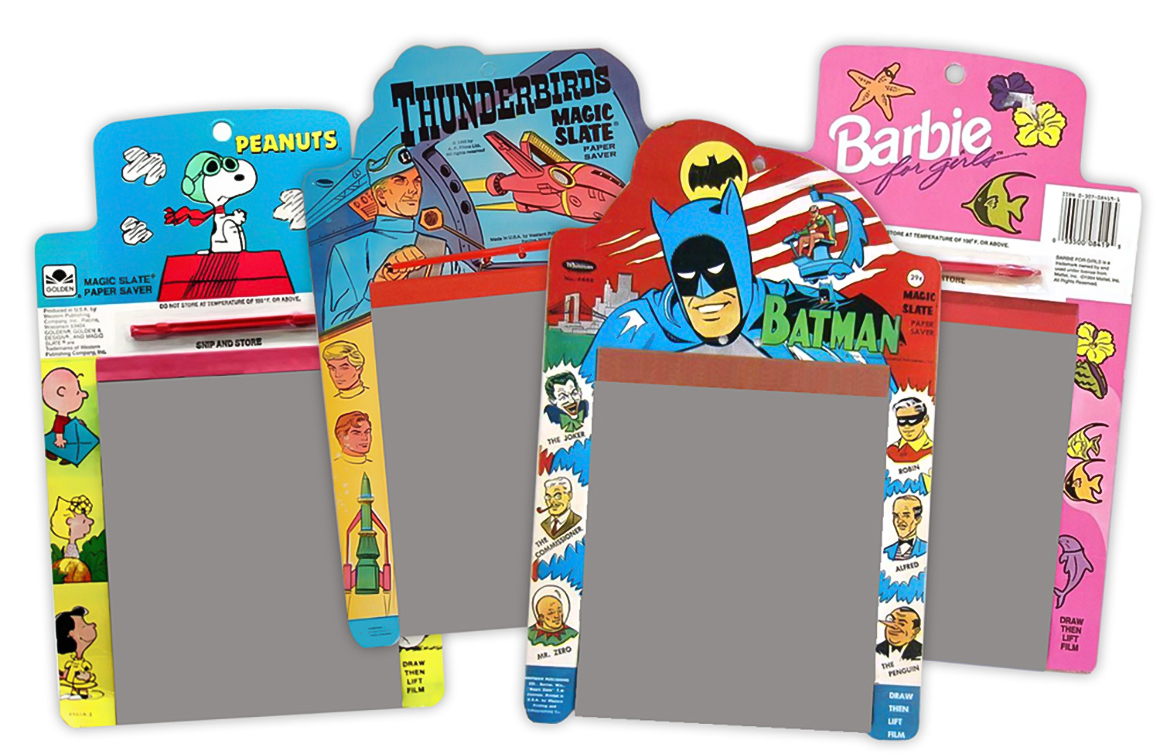Magic Slate Paper Savers have entertained children for decades. The zero-tech tablets allowed children to draw and quickly erase their work repeatedly without needing to recharge between uses.
Part of the toy’s appeal was its practical design. Each slate was constructed from rigid cardboard and contained a section of waxed paper (often black) covered by a transparent sheet of acetate. When users wrote or drew on the surface using the plastic writing stylus, the acetate adhered to the wax, causing the wax’s colour to appear through the sheet. Undoing the process was achieved by simply lifting the plastic sheet and clearing the slate.
While all Magic Slates operated in a similar fashion, many also shared a common design feature. In addition to being brightly coloured, they often depicted a cartoon or television character at the top, with complementary smaller illustrations framing the writing surface down both sides. This aspect of the toy’s design made them appealing to children.
The origins of the Magic Slate are somewhat murky, but they seem to date back to the 1920s, involve a man named R.A. Watkins, and a printer in Aurora, Illinois called The Strathmore Company. Strathmore produced some of the earliest versions of the paperless notepad, even after Western Publishing acquired them in the late 1950s. Eventually, Magic Slates were manufactured under the Western Publishing brand or one of their eventual subsidiaries, such as Golden and Whitman.
The toys continue to be produced today, remaining as staples in kids’ party gift bags and impulse buys in department and dollar stores. Collectors can find vintage versions of the toy on auction sites, some in surprisingly unused condition.
Note: If you buy something using the eBay link in this story, we may earn a small commission. Thank you for supporting independent toy journalism!

